Are you wondering how to start an online business in 2019?
Then you’re in the right place.
In this guide, I’ll teach you the 7 steps to starting an online business with little (or no) money:
Ready? Let’s get started.
Table of Contents
Step #1: Find the Type of Business You Want to Start
First things first.
To start an online business, you need to find the type of business you are going to start.
A good question here is:
How can you do that? How can you find out what the best type of business is for you?
There are no silver bullets here.
Start by making a list of all the things you’re good at.
For example, you may be good at online sales.
This means that an option for you could be an eCommerce business.
As you can see, this is a topic that many people are interested in:
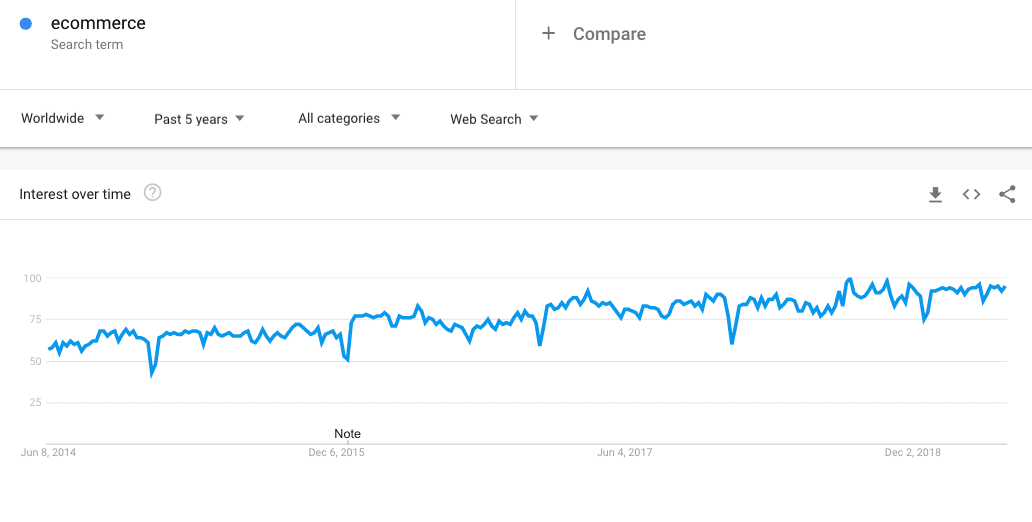
The process of starting an eCommerce business is also something that interests many people:

This means two things:
- That you are not the only one who is good at selling things online
- That you can easily find information on how to start your eCommerce business
Of course, starting (and growing) an eCommerce business is NOT easy.
However, the fact that there are other people already doing it makes it less challenging.
Why?
Because you can learn from their previous wins and failures.
eCommerce is so broad that eventually you figure out that you want to start a clothing brand.
And that’s good you can zoom in later. Now you know what kind of business you want to start, you need to choose the platform you’re going to use.
For example, you can build an online store using one of the following eCommerce platforms:
- BigCommerce
- WooCommerce
- Shopify
- Magento
- Squarespace
- PrestaShop
Alternatively, you can use one of the following marketplaces to sell your products:
- Fulfillment by Amazon (Amazon FBA)
- eBay
- Etsy
In any case, choosing a platform is one of the most important things to take care of when starting an eCommerce business.
Now that you’ve decided on the type of business you want to start, let’s find a need that your business can cover.
Step #2: Find a Need Your Business Can Cover
This is the second step you need to follow in order to start an online business.
The best online businesses cover very specific human needs or solve complex human problems.
What do I mean by that?
That you have to find a pain point-something that’s important for a widespread set of customers.
According to Statista, there will be more than 1.92 billion people buying goods online by 2019:

This means that more and more people will be looking for solutions online, and will be willing to trust online business with their needs.
This is an emerging opportunity for people who want to start their own online business.
Let me illustrate how you can identify these needs using a simple example.
Let’s say you’re interested in starting an online business that sells yoga accessories, which might include:
- Yoga clothes
- Yoga mats
- Yoga towels and
- More
You do some online research to see if people are actually looking for yoga products:

As you can see, there are approximately 201,000 people searching for the term “yoga mat” on a monthly basis.
This doesn’t necessarily imply commercial intent, but it’s a strong indicator that people actually have this need.
Of course, this is not the only thing you need to consider before starting an online business.
The path toward starting a successful online store is NOT easy.
However, it gets easier if there is a need—rather than just a desire—for your products or services.
Step #3: Conduct Competitive Research
The next thing you need to do is conduct competitive research.
When I say competitive research, I mean that you need to answer the following questions about competing businesses:
- What are their main properties and how active are they in each of these?
- What is their monthly traffic and how do they generate that traffic?
- What are the products your competitors sell?
- What are their best-selling products?
- What are their customer reviews?
Of course, there are many other questions you need to answer when conducting competitive research.
However, when you’re on a budget and don’t have a team to help you, these questions make for an excellent starting point.
Taking the example we mentioned in the previous section another step forward, you can take a look at online stores that sell yoga-related products:

Make a list of the information you need to source and start your research.
I suggest using Google Sheets to keep everything in order:
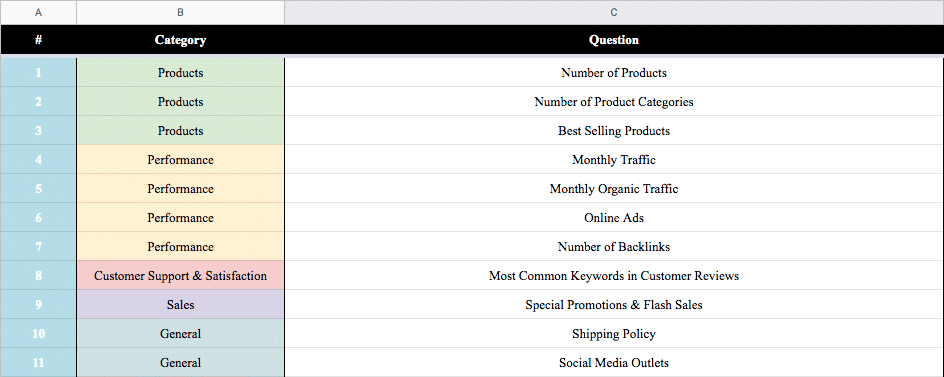
As you can see, the categories I am using in this particular example are:
- Products
- Performance
- Customer Support & Satisfaction
- Sales
- General
When conducting competitive research on your own, feel free to use as many categories and checkpoints as you wish.
Some of the tools you can use when conducting competitive research include:
- JungleScout—For Amazon FBA
- Crayon—For competitor monitoring
- Twitter Search—A search engine, but for Twitter
- Seotify—A competitive analysis heatmap
- SimilarWeb—A competitive and traffic analysis tool
- Ahrefs—One of the best competitive analysis tools
- Whatruns—A free Chrome extension to discovery technologies on sites
Step #4: Analyze Your Target Audience
After conducting your competitive research, you need to analyze your target audience.
This is the tricky part.
In my experience, most founders believe they know their target audience well.
The truth is that the knowledge of their audience is—most of the time—quite limited.
By analyzing your target audience, I mean that you need to know information such as:
- Where they live
- What’s their age
- Are they married?
- Their profession
- What sources of information they have AND
- More
Of course, acquiring all of this information is not easy.
However, it gets easier when you have a process to follow.
You also need to know that, in the beginning of your entrepreneurial journey, you won’t have any data to use.
So, what do you need to do to start your online business?
You have to make assumptions based on research.
Let me illustrate this with a quick example using the same topic used in step 3.
Here is what our customer avatar (or persona) will look like:
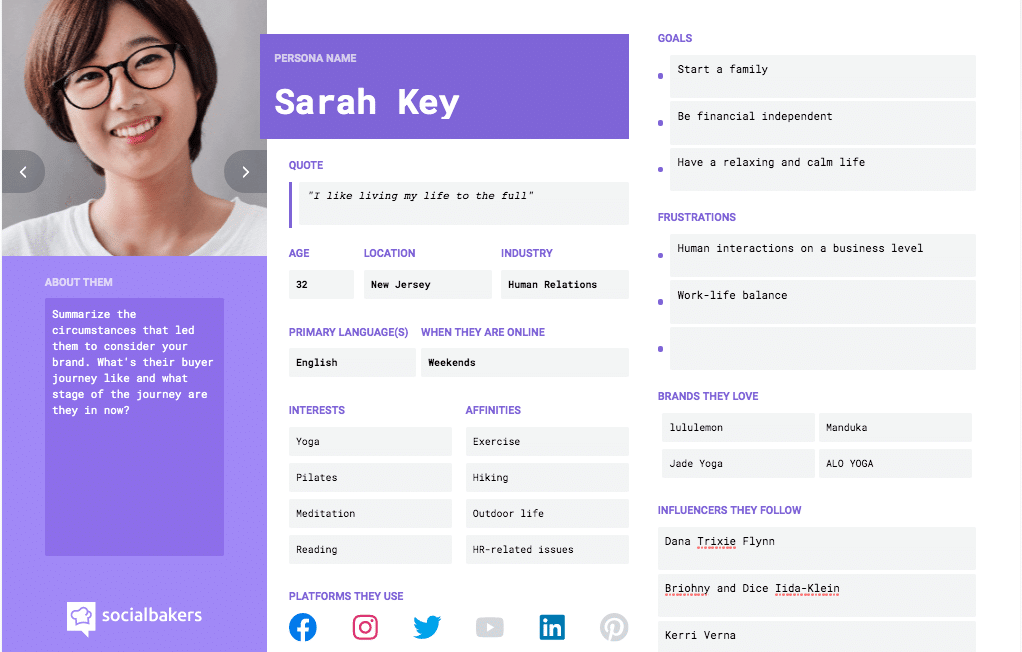
As you can see, the more information we have, the better.
To acquire that information, you can:
- Read your competitors’ product reviews
- Analyze their audience of influencers
- Analyze their audience of relevant brands
- Visit online forums and communities
Make no mistake: analyzing your target audience is one of the most important steps when starting your own business.
Step #5: Validate Your Business Idea
Validating a business idea is a step that many online business founders skip.
However, market validation can be one of the most important steps in setting up a successful online business.
It’s also one of the best ways to start a business with little or no money.
So, how can you validate your business idea?
You must build what the lean startup movement calls a minimum viable product (MVP).
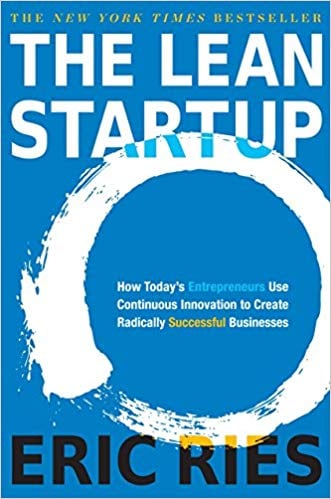
What is a minimum viable product?
According to Eric Ries, the author of the Lean Startup book:
“The minimum viable product is that version of a new product which allows a team to collect the maximum amount of validated learning about customers with the least effort.”
Let me give you an example:
I’m sure you’ve heard of Groupon, the popular website that offers coupons and special promotions on local businesses.
According to Ahrefs, Groupon gets more than 22 million organic visits every month:

That’s huge, right?
However, things were not always like that for Groupon.
Back in 2010, a while after the company launched its MVP, its website was fairly simple:
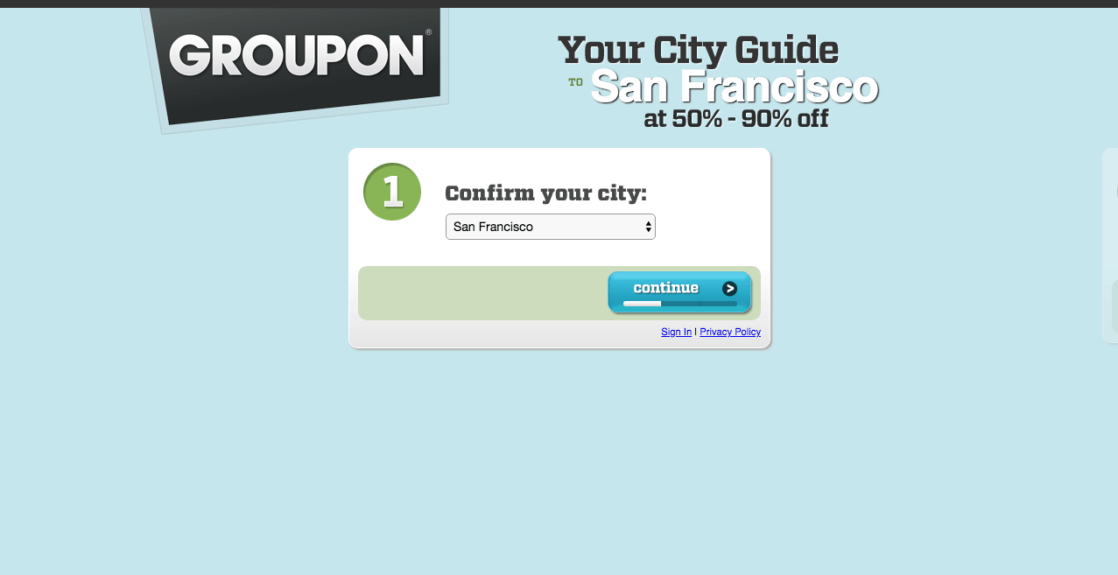
From these humble beginnings, the company grew to what it is today.
This MVP website (which was almost a simple landing page) allowed the founders to gain early feedback, as well as a proof of their concept.
There are many other successful MVP examples like the one I just shared with you.
In any case, it is evident that one of the best ways to start an online business is by validating your business idea first.
Let’s move on to the next step.
Step #6:Find Ways to Get Initial Traction
Let’s assume you’ve now set up your online business, analyzed your target audience and carried out some competitive research.
How do you get your feet wet and really get started?
This is perhaps the most difficult part.
At this step, you need to find ways to generate some initial traffic.
Generating traffic for a new website is never easy.
There are several reasons why this is the case:
- You have no authority in the space
- No customer reviews
- Or no assets whatsoever (i.e. an email list)
- You don’t have a social following
- You’re lacking resources
All these reasons are enough to scare many people away from starting their own online business.
The important thing to keep in mind is that most online businesses start like this.
There is nothing to be afraid of. You can hire virtual workers to help you launch. There is an unlimited amount of tasks virtual assistants can perform.
To gain initial traction for your online business, you can:
1) Start posting on social media
Everyone knows that organic reach on social media is declining.
This is a reality even for big brands with large social followings:

However, many of these same brands get no organic traction whatsoever:

Still, social media can be a great opportunity to promote your products and get some initial traction.
This is especially the case if you are on a budget.
2) Run social ads
Running social ads is a great way to get some early traction for your online business.
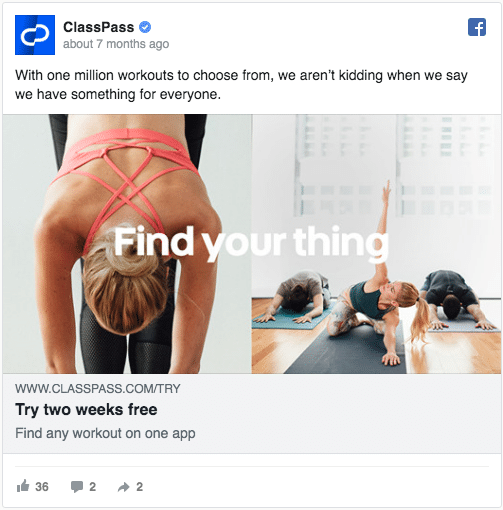
The best part?
You can make a small investment and invest further after making your first sales.
Keep in mind though that you need to advertise at the channels where your target audience spends their time online.
This way, you’ll get the most out of your social ads.
Bonus Tip: You can use AdEspresso’s Library of Ads to find inspiration for your own social ads.
If you don’t know how to do this, you can hire a freelancer to do it for you.
To find one, you can use a freelance website such as Upwork.
Just type in what you are looking for:

And shortlist the candidates that best fit your needs and budget:

3) Be engaged in online communities (i.e. groups and forums)
A great way to generate traffic for your new website is by getting involved in online communities.
For example, you can find all the Facebook groups that are related to your product and join those that are most active:
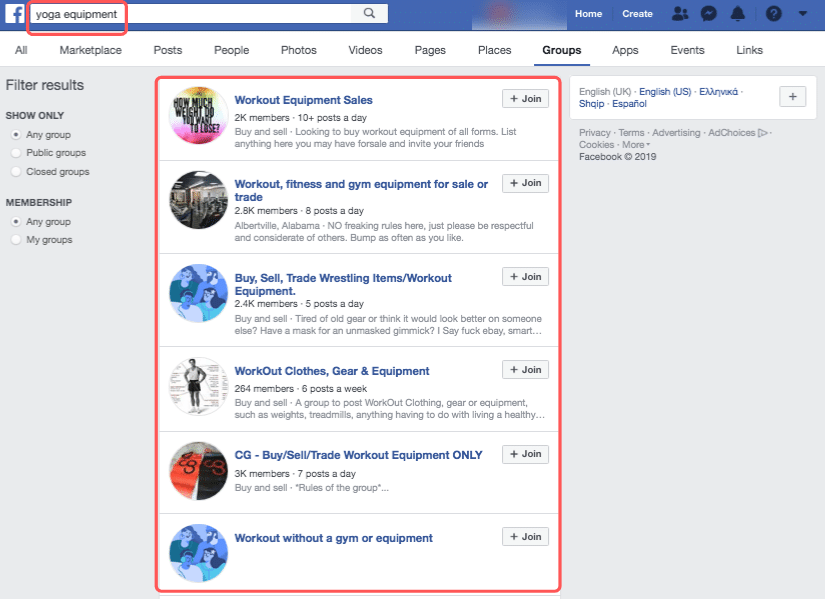
You can then help other members, by answering any questions they may have.
4) Find your competitors’ dissatisfied customers
Even the best companies have dissatisfied customers:
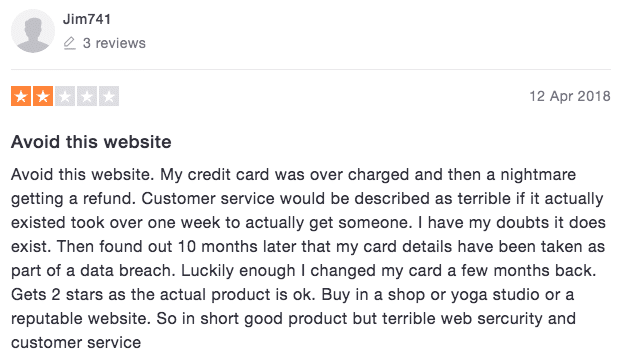
The question is: how can you use that?
You can use reviews like this to:
- Adjust your copy and messaging
- Improve your product descriptions
- Write better copy for your social ads
- Refine your services (e.g. customer support, shipping)
Bonus Tip: You can read positive Amazon reviews from your competitors or leading brands in your space, identify patterns in the comments, and use commonly-used words in your social ad copy or messaging.

5) Use affiliates
Next, you can find websites that review your competitors (or leading brands in the space), and ask them to include you in their review pages or blog posts.
How can you do that?
Simply type the following into a Google search:

You’ll get a list of comparison pages for your competitors:
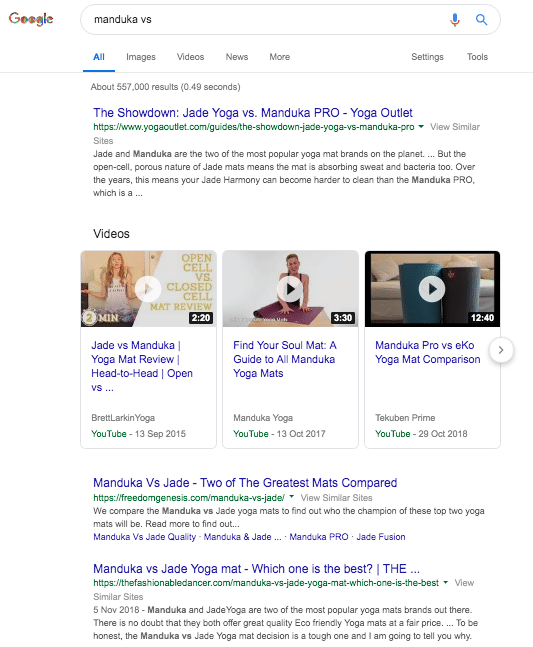
You can then reach out to the owners of those websites and ask them to include you in the comparison pages.
You can even suggest paying them on commission per sale.
Cool, right?
6) Start answering questions on Quora
Quora is where many people go to search for answers to their questions.
What makes it different than other websites?
Quora is a mega-site with almost 100 million organic visitors per month:

You should definitely use it if you want to get free traffic to your new online business.
First, find a topic that interests you:

Then, find relevant questions that you feel confident in answering:

Finally, start answering these questions and try to be as helpful as possible.
Essential Tip: Don’t be sales-y and don’t try to promote your business or products immediately. Instead, try to add value by first and foremost answering peoples’ questions.
You now know the ways to gain early traction for your website.
Let’s move on to the next (and last) step of the process.
Step #7: Find Ways to Retain Your Customers
I’ll keep this one short.
To grow a successful business online, you have to learn how to retain your customers.
Why is this important?
Because it can cost up to 5 times more to acquire a new customer than to retain an existing one.
This is why you need to build long-term relationships with your customers.
You may be wondering: how can I do that?
Here are some ways to retain your customers once they buy from you:
- Send regular emails to those who subscribe to your newsletter
- Offer special discounts to customers who are loyal to you
- Offer product bundles as a way to up-sell and cross-sell
- Try to be human and be there when they need you
There is really no silver bullet when it comes to retaining your customers.
You just have to be authentic and show your appreciation in every possible way.
Do that, and you won’t have to worry about acquiring new customers ever again.
Wrapping This Up
So there you have it.
These are the steps you need to take to start your own online business.
As you may have noticed, starting an online business is not easy.
However, it gets easier when you have someone to show you the ropes.
I hope this guide has helped you understand what you need to do in order to kick-start your own business online.
Now I’d like to hear from you.
Which one of these steps did you find most difficult? Was it the fifth one—how to validate your business idea—or maybe the last?
Either way, let me know by sharing your thoughts in the comment section below!
Additional resources you might be interested in:

Very helpful tips and enjoyed reading your posts! I’m eager to get started in my new venture!